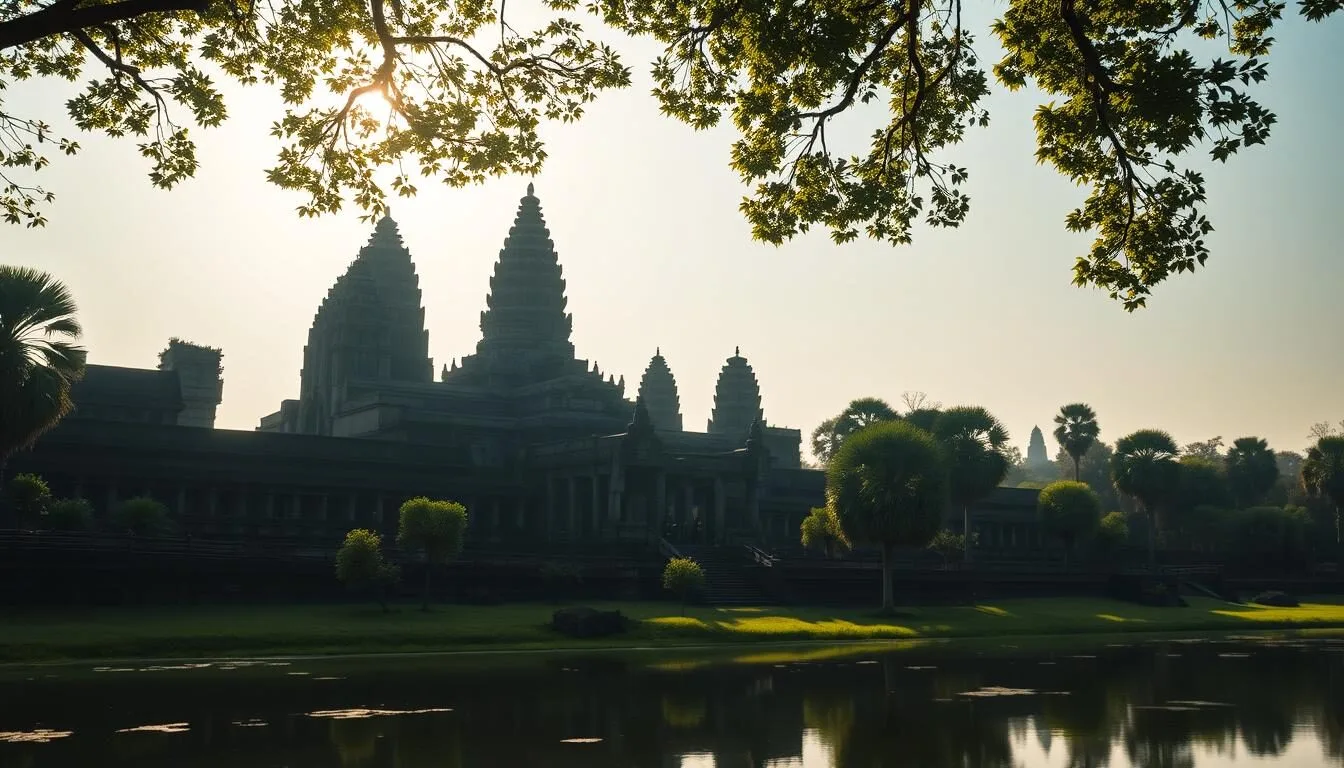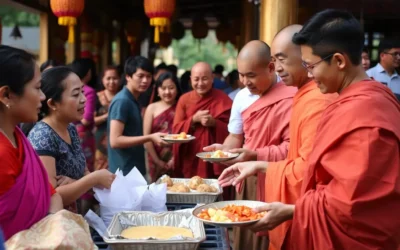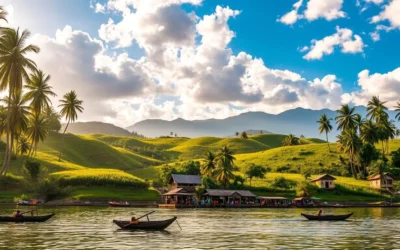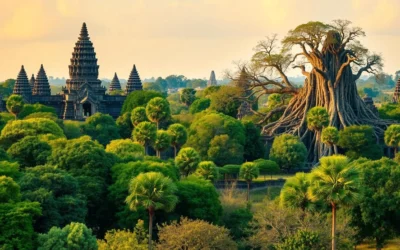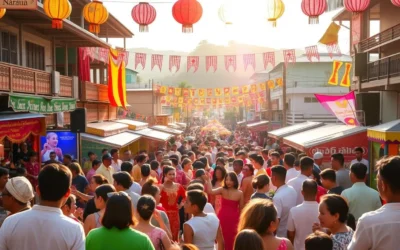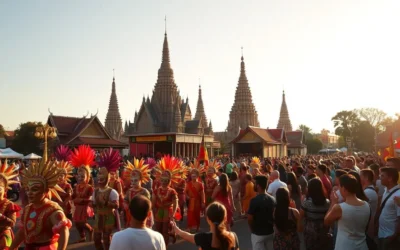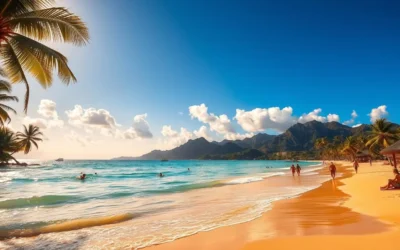✓ Accommodations ✓ Flights ✓ Rental Cars ✓ Tours & Activities
Imagine stepping into a world where ancient history and culture blend seamlessly with natural beauty. Siem Reap, the gateway to the magnificent Angkor Archaeological Park, is a destination that captivates travelers with its rich heritage and unforgettable experiences.
With over a thousand temples dating back to the Khmer Empire, Angkor is a treasure trove of archaeological wonders. As you explore this UNESCO World Heritage Site, you’ll uncover the secrets of the past and enjoy diverse attractions that make Siem Reap a beloved destination.
From the majestic Angkor Wat at sunrise to immersing yourself in authentic Khmer cuisine, your visit to Siem Reap promises to be an unforgettable adventure. Get ready to explore the top attractions and activities that make Angkor a must-visit destination in Southeast Asia.
Discovering the Majestic Angkor Wat Temple Complex
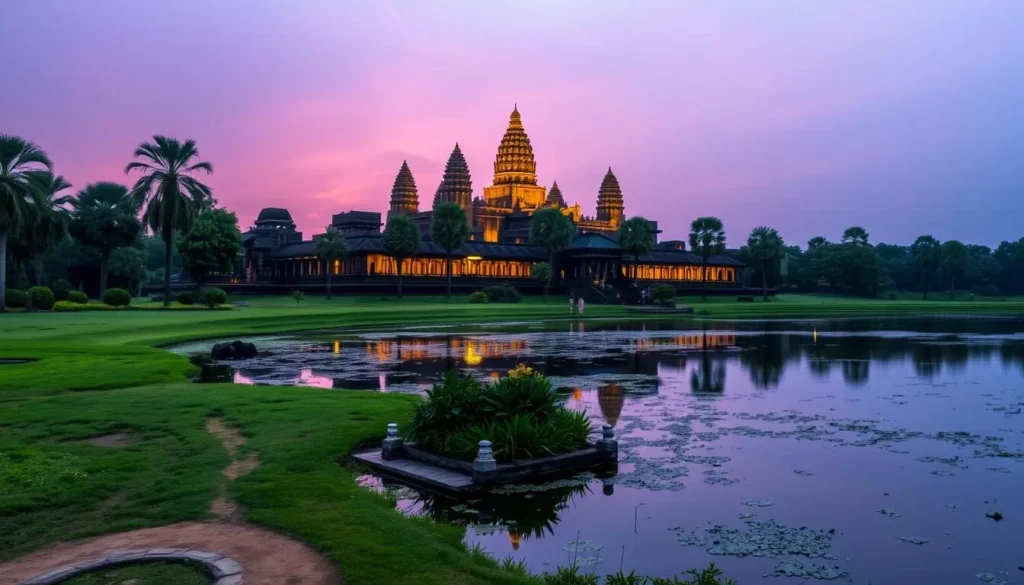
Angkor Wat, a sprawling temple complex, is a must-visit destination for anyone fascinated by history, architecture, or culture. As the crown jewel of Cambodian heritage, it was built in the 12th century by King Suryavarman II as a Hindu temple dedicated to Vishnu.
Best Time to Visit Angkor Wat
The best time to visit Angkor Wat is during sunrise, around 5:30 AM, when the temple complex is bathed in golden light. This timing offers perfect photo opportunities with fewer crowds compared to midday.
Exploring the Grand Circuit vs. Small Circuit
Visitors can choose between the Grand Circuit, a 26-kilometer path, and the Small Circuit, which is 17 kilometers. The Small Circuit covers the most famous temples, including Angkor Wat, Bayon, and Ta Prohm, in a more manageable timeframe. Consider hiring a knowledgeable guide to provide historical context and help navigate the massive complex.
Essential Tips for Temple Etiquette
When visiting Angkor Wat, remember to dress modestly, covering your shoulders and knees, as a sign of respect. Temple passes are available for one day ($37), three days ($62), or seven days ($72), with the three-day pass offering the best balance for most travelers.
By understanding the history and architecture of Angkor Wat, you’ll enhance your experience of this magnificent temple complex. Whether you’re exploring the intricate bas-reliefs or marveling at the 216 stone faces of Bayon Temple, Angkor Wat is a journey through time.
Beyond Angkor Wat: Must-Visit Temples in the Archaeological Park
As you venture beyond the iconic Angkor Wat, you’ll discover a treasure trove of temples in Siem Reap’s archaeological park. The park is home to hundreds of temples, each offering a unique glimpse into the history and architecture of the Khmer Empire.
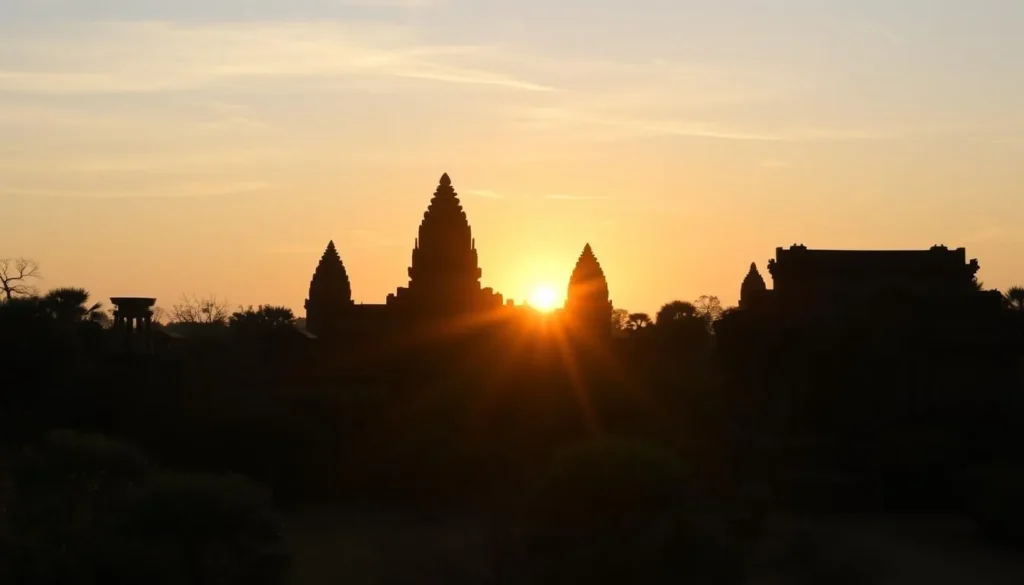
Ta Prohm: The Jungle Temple
Ta Prohm, made famous by the movie “Tomb Raider,” is a must-visit temple that has been reclaimed by nature. The massive strangler fig and silk cotton trees have intertwined with the temple’s structure, creating a mystical atmosphere.
Bayon Temple: The Faces of Angkor Thom
The Bayon Temple, located at the center of Angkor Thom, is renowned for its 216 enigmatic smiling faces carved into 54 towers. These faces, representing either King Jayavarman VII or the bodhisattva Avalokiteshvara, create a mesmerizing experience for visitors.
Banteay Srei: The Citadel of Women
Banteay Srei, often called the “Citadel of Women,” is a small temple known for its exquisite pink sandstone carvings. Considered some of the finest in Khmer art, these carvings are a testament to the craftsmanship of the ancient Khmer people.
These temples, including Ta Prohm, Bayon, and Banteay Srei, offer visitors different perspectives on Khmer architecture, from the structured symmetry of Angkor Wat to the baroque style of Bayon and the delicate precision of Banteay Srei. Many travelers in Siem Reap choose to explore these temples by tuk-tuk, bicycle, or as part of guided tours that provide historical context and help navigate between these magnificent places.
Immersing in Khmer Culture and Traditions
As you explore the wonders of Angkor, you’ll have the opportunity to immerse yourself in the rich cultural heritage of Cambodia. The region offers a variety of cultural experiences that provide insight into the history and traditions of the Khmer people.
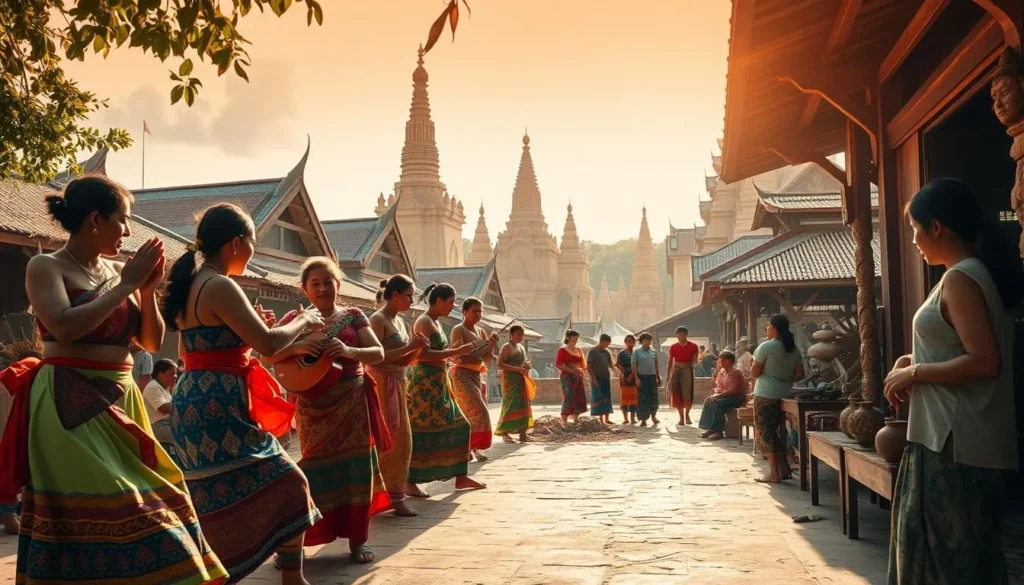
Attending Traditional Apsara Dance Performances
One of the most captivating cultural experiences is watching a traditional Apsara dance performance. This ancient dance, which dates back to the 7th century, was once performed exclusively for royalty. Apsara dancers, adorned in elaborate costumes and headdresses, tell stories through graceful hand gestures and movements that have been preserved through generations.
Visiting the Angkor National Museum
The Angkor National Museum is another must-visit destination for anyone interested in Khmer history and culture. With eight galleries featuring over 1,000 artifacts, interactive displays, and multimedia presentations, you can gain a deeper understanding of the Khmer Empire and its significance.
Exploring the Cambodian Cultural Village
For a more immersive experience, visit the Cambodian Cultural Village, a living museum that showcases the diverse traditions of Cambodia’s various ethnic groups. Here, you can witness cultural performances, handicraft demonstrations, and reconstructed villages, offering a fascinating glimpse into the country’s cultural richness.
These cultural experiences not only enrich your visit to Angkor but also provide a deeper appreciation for the resilience and heritage of the Khmer people.
Savoring Authentic Khmer Cuisine
Siem Reap, the gateway to Angkor Wat, is also a culinary haven where you can indulge in authentic Khmer dishes.
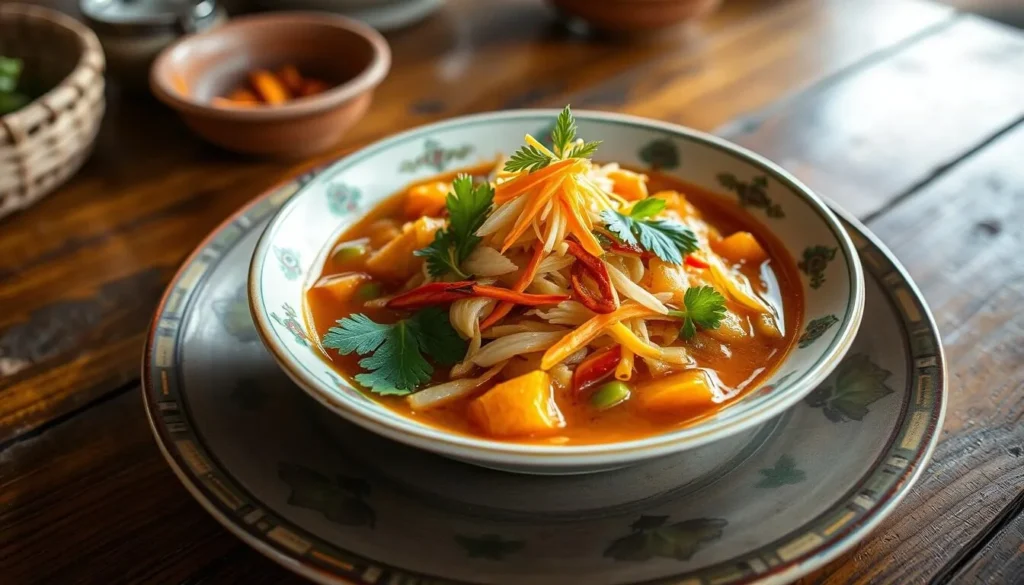
Khmer cuisine is a rich representation of Cambodia’s cultural heritage, offering a unique blend of flavors that distinguishes it from neighboring Thai and Vietnamese food. You can enjoy a variety of dishes, from savory and sweet delights like Khmer sweets to the fragrant spices and tastes of Amok curry.
Must-Try Traditional Dishes
When exploring Khmer cuisine, there are several must-try traditional dishes. These include Fish Amok, a fish curry steamed in banana leaves, Lok Lak, stir-fried beef with a lime pepper dipping sauce, and Nom Banh Chok, Khmer noodles served with a fish-based green curry gravy and fresh vegetables.
Joining a Cambodian Cooking Class
Cambodian cooking classes in Siem Reap provide a hands-on experience in preparing authentic Khmer dishes. You start with a visit to local markets to select fresh ingredients before learning traditional cooking techniques from expert chefs. These classes not only teach you how to recreate Cambodian dishes at home but also explain the cultural significance and history behind each food item.
Best Restaurants in Siem Reap
Siem Reap offers a range of dining options, from street food stalls to upscale restaurants serving traditional and fusion Khmer dishes. Restaurants like Cuisine Wat Damnak and Malis showcase contemporary interpretations of traditional Khmer recipes using locally-sourced ingredients and ancient cooking methods.
Exploring the Floating Villages of Tonle Sap Lake
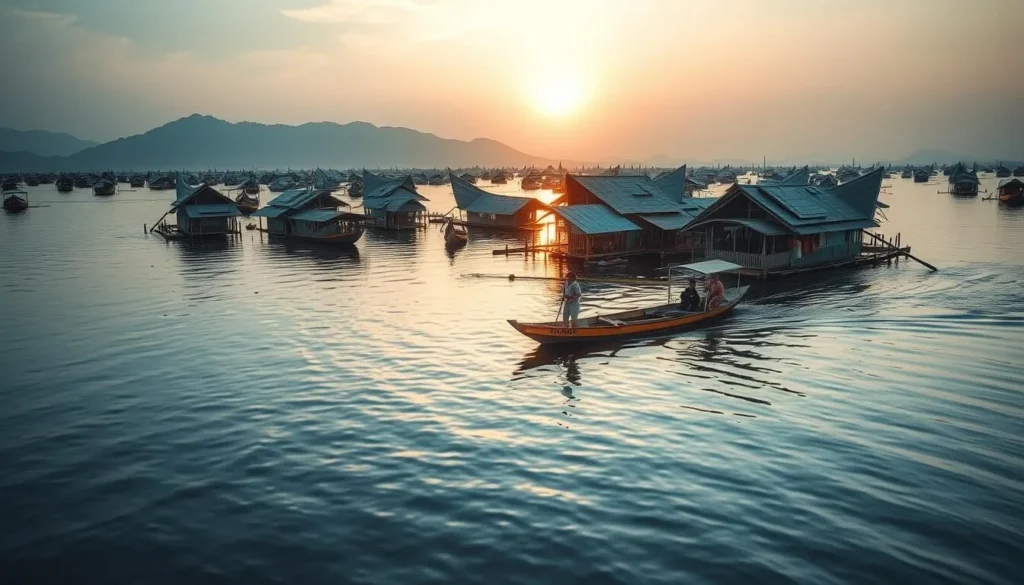
Experience the enchanting world of Tonle Sap Lake’s floating villages, where life on water is a reality. Tonle Sap Lake, the largest freshwater lake in Southeast Asia, is a unique destination that offers more than just a glimpse into the lives of its floating communities. It’s an opportunity to witness the harmony between nature and human habitation.
Kampong Phluk: The Stilted Village
Kampong Phluk, a village built on 10-meter stilts, offers a glimpse into a traditional way of life that adjusts to the dramatic seasonal changes in water levels. During the wet season, the houses appear to float, creating a surreal landscape.
Chong Kneas: The Accessible Floating Community
Chong Kneas is the most accessible floating village from Siem Reap, providing a convenient experience where visitors can observe floating schools, churches, and even crocodile farms. It’s a bustling community that showcases life on the lake.
Kayaking and Boating Adventures
For a more immersive experience, consider kayaking or boating through the flooded forests of Tonle Sap Lake. This allows you to navigate through unique ecosystems and learn about the sustainable fishing practices that have supported these communities for centuries.
Visiting the floating villages of Tonle Sap Lake is a journey into a different world, where the rhythm of life is dictated by the water. Whether you choose to explore Kampong Phluk, Chong Kneas, or other villages, you’re in for an unforgettable adventure.
Angkor, Cambodia: Best Things to Do for Adventure Seekers
Beyond the majestic temples, Angkor offers a range of thrilling activities for the adventurous traveler. If you’re looking to experience the region’s natural beauty and rich culture in an exciting way, consider incorporating these adventures into your trip.
Ziplining Through the Jungle Canopy
Ziplining over the jungle canopy at Angkor Archaeological Park is an exhilarating experience that combines adventure and sightseeing. You’ll soar above the forest, enjoying glimpses of ancient temples while professional guides ensure your safety throughout the 10-zipline course. This activity is suitable for both novices and experienced zipliners, offering a unique perspective on the stunning temples and lush greenery from above.
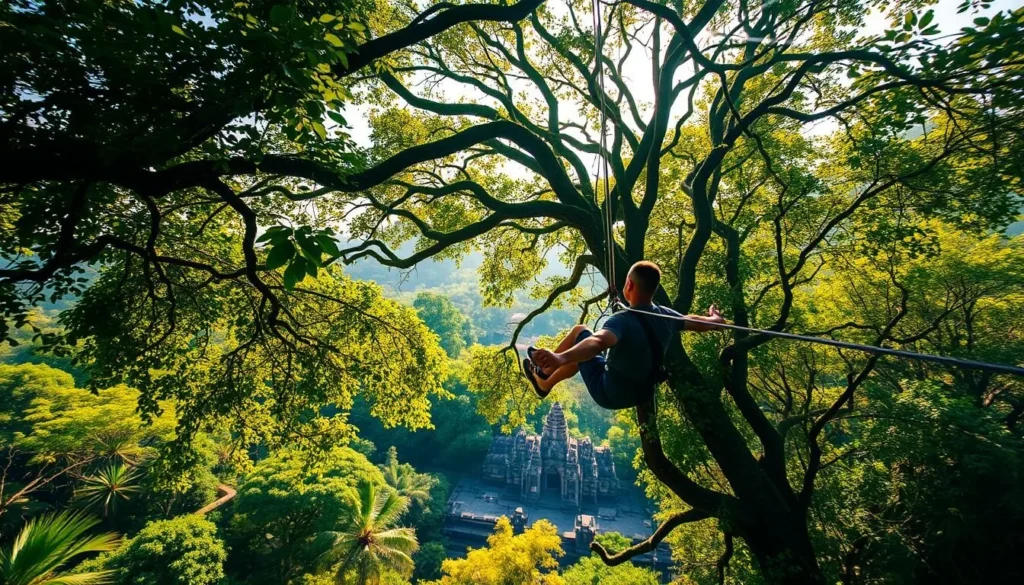
Cycling Tours Around the Temples
For a more leisurely pace, cycling tours around the temples provide an eco-friendly way to explore at your own pace. You can choose from easy half-day rides along the Small Circuit or full-day tours that take you to lesser-visited temples through scenic countryside paths. This allows you to enjoy the surrounding landscape and experience local life outside the temple complex.
Quad Biking Through the Countryside
If you’re seeking a more adrenaline-pumping experience, quad biking excursions offer the chance to venture beyond the main tourist areas into rural villages, rice fields, and jungle trails. You’ll get to experience the authentic countryside and enjoy the thrill of riding through varied terrain.
These activities can be incorporated into your temple trip to provide a balanced itinerary that combines cultural exploration with outdoor excitement, giving you a more comprehensive experience of the Angkor region.
Experiencing Siem Reap’s Vibrant Nightlife
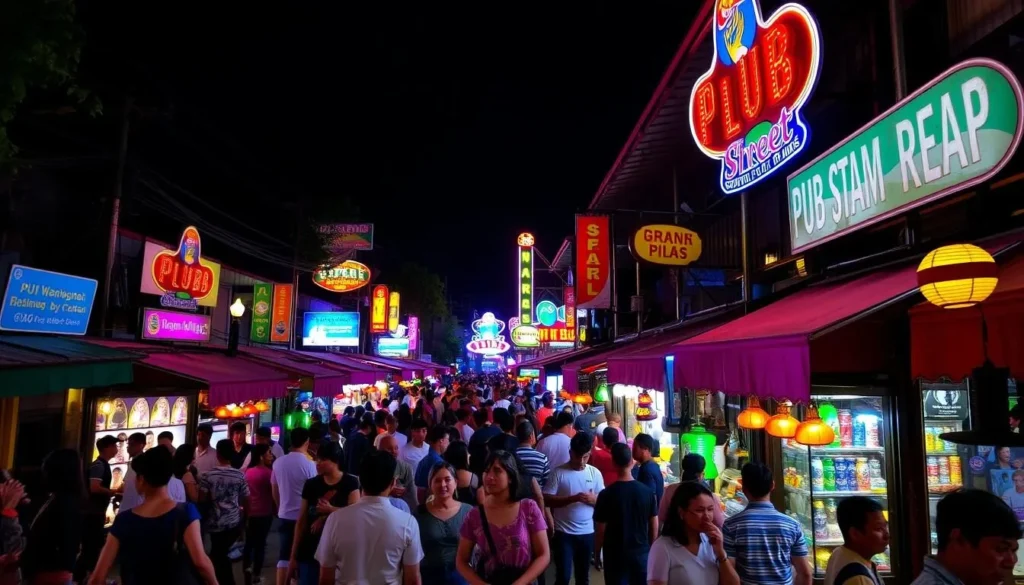
As night falls, Siem Reap’s Pub Street becomes the epicenter of fun and excitement. This bustling area is where you can experience the best of Siem Reap’s vibrant nightlife. Pub Street is lined with bars, restaurants, and street food stalls, offering a diverse range of entertainment options for all tastes.
Pub Street: The Heart of Evening Entertainment
Pub Street is the heart of Siem Reap’s evening entertainment. Here, you can enjoy Angkor beer, Cambodia’s famous brew, and try unique cocktails at various bars. Places like Miss Wong Cocktail Bar and Soul Train Reggae Bar each have their own vibe and drinks, catering to different preferences.
Watching the Spectacular Phare Circus
For a night of entertainment that also supports local initiatives, consider watching the Phare Circus. Featuring incredible shows put together by students and graduates from Battambang’s Phare Ponleu Selpak vocational training centre, the circus offers a unique evening experience. It’s not just about the entertainment; it’s also about supporting disadvantaged youth.
Night Markets and Street Food
The night markets surrounding Pub Street come alive after dark, offering everything from souvenirs to clothing. You can browse handicrafts while sampling delicious street food at the Angkor Night Market and Art Center Night Market. Street food stalls in the city center serve up affordable local delicacies like grilled meats, papaya salad, and banana pancakes.
Shopping for Authentic Cambodian Souvenirs
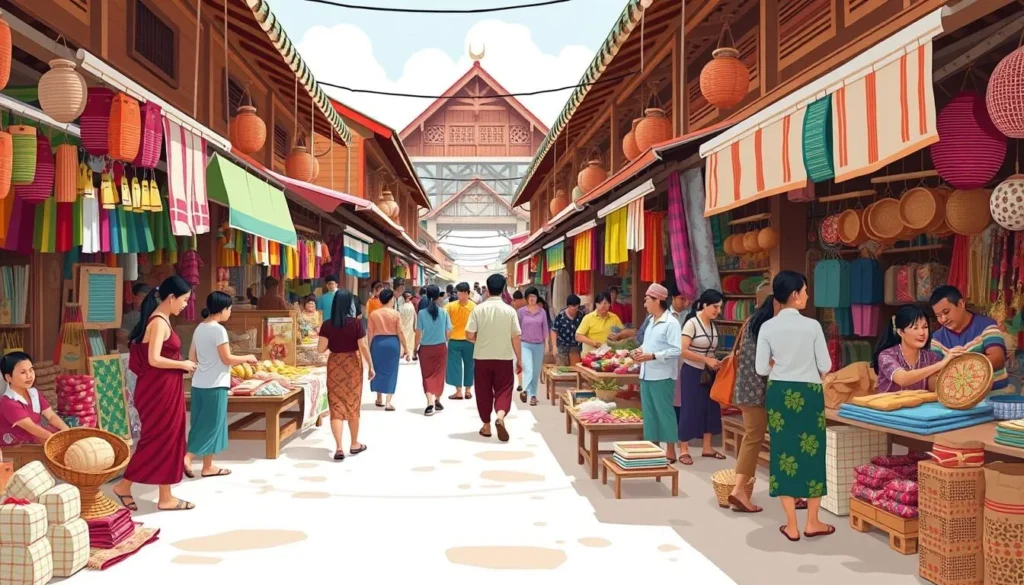
If you’re looking for meaningful souvenirs, Siem Reap’s markets and local artisans are the perfect places to explore. Shopping in Siem Reap offers the perfect opportunity to support local artisans while bringing home authentic Cambodian souvenirs that represent the country’s rich cultural heritage.
Exploring the Old Market (Phsar Chas)
The Old Market, or Phsar Chas, in the heart of the city has been a trading center for locals since the 1920s. It’s the best place to experience authentic market culture while browsing for textiles, spices, woodcarvings, and silver jewelry. You can immerse yourself in the community and experience real Cambodian life.
Visiting the Artisans Angkor Workshops
For high-quality, ethically produced crafts, visit Artisans Angkor workshops where you can watch skilled artisans create traditional Khmer crafts, including silk weaving, stone and wood carving, lacquerware, and silver plating. Techniques passed down through generations are used, ensuring that your purchases directly support local craftspeople.
Finding Treasures at the Made in Cambodia Market
The Made in Cambodia Market along the Siem Reap River offers a more relaxed shopping experience. With a strict policy that all items must be produced in Cambodia, you can be sure that your purchases support the local economy. The market is open every day from 12:00 to 18:00, featuring street food sellers and a handful of bars, making it a great place to spend an afternoon.
When shopping in markets, friendly bargaining is expected but should be done respectfully. Start at about 50% of the initial price and work toward a mutually agreeable figure, keeping in mind that a few dollars more means little to tourists but can make a significant difference to locals. Beyond the main markets, Siem Reap’s street shops and boutiques offer curated collections of contemporary Cambodian designs and social enterprise goods.
Day Trips from Angkor Worth Taking
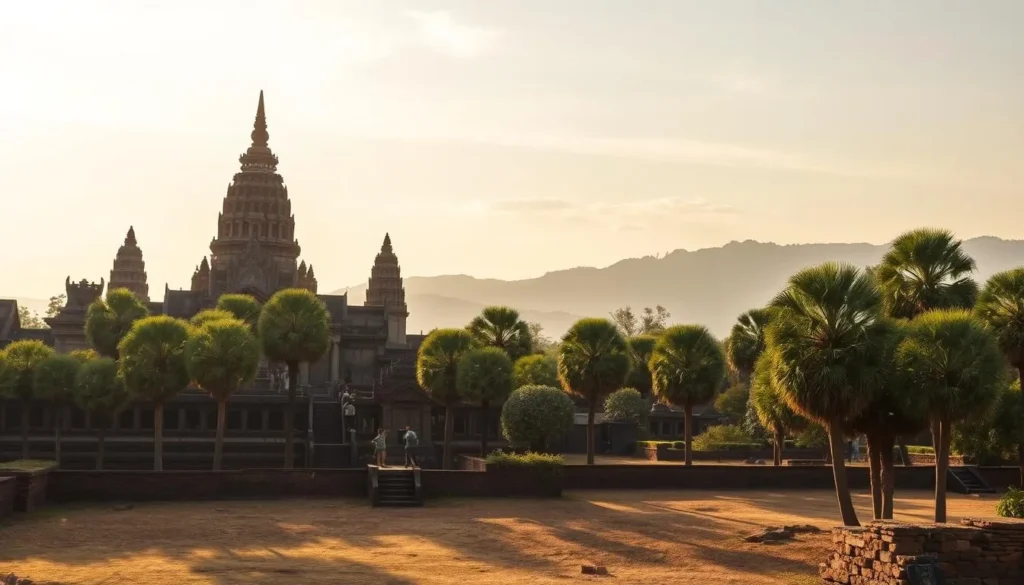
While Angkor Wat is a must-visit, day trips from Siem Reap can reveal the diversity and richness of Cambodian culture and landscapes. These trips allow visitors to explore less crowded temples and experience the natural beauty surrounding Siem Reap.
Beng Mealea: The Untamed Temple
Beng Mealea, located about 40km east of the main Angkor complex, offers an Indiana Jones-like experience. You can explore an untamed temple largely reclaimed by jungle, with wooden walkways allowing you to navigate through collapsed corridors and moss-covered stones.
Koh Ker: The Pyramid Temple
Koh Ker, a remote archaeological site that served as the capital of the Khmer Empire from 928 to 944 AD, features a unique seven-tiered pyramid temple called Prasat Thom. Visitors can climb this temple for panoramic views of the surrounding jungle.
Phnom Kulen National Park
A day trip to Phnom Kulen National Park takes you to a sacred mountain considered the birthplace of the Khmer Empire. Here, you can visit the River of a Thousand Lingas with ancient carvings underwater, swim beneath a picturesque waterfall, and see the giant reclining Buddha.
These day trips typically require a full day (8-10 hours) and can be arranged through your hotel or local tour operators. A private car is the most comfortable option for reaching these more distant temple sites. It’s recommended to plan these excursions on separate days from your main Angkor temple exploration to fully appreciate the unique atmosphere and historical significance of these remarkable places.
Conclusion: Making the Most of Your Angkor Adventure
Siem Reap, the gateway to Angkor Wat, is a treasure trove of experiences that will leave you enchanted. As you explore this ancient city, you’ll discover an extraordinary blend of archaeological wonders, cultural experiences, and natural beauty.
To make the most of your visit to Siem Reap, plan your time wisely, balancing temple exploration with cultural activities. Most visitors find that 3-4 days is the ideal amount of time to spend in Siem Reap. The best way to experience Angkor is to pace yourself, alternating between major temples and lesser-known sites, and incorporating non-temple activities like cooking classes or floating village visits.
By approaching your journey with curiosity and respect for local customs, you’ll ensure a memorable and enriching Angkor adventure, exploring the top attractions in Siem Reap.
The above is subject to change.
Check back often to TRAVEL.COM for the latest travel tips and deals.
